By Terry Sovil from the January 2012 Edition
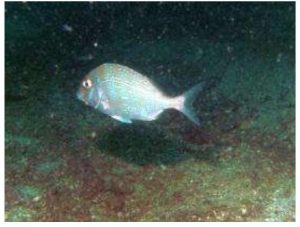 Pacific Porgy
Pacific Porgy
The Pacific Porgy has a black spot on its upper pectoral fin base. They belong to the family of Porgies. These fish range from depths of 10’ to 100’. They are silvery gray with large white lips and chin. They have a steep snout and a smooth convex dorsal outline. Their scales are large and obvious. Porgies may display 5 body bars and bars below their eye which can be rapidly darkened or faded. They are found occasionally in the Gulf of Mexico to Panama. Generally solitary they prefer to be over sandy bottoms. They tend to ignore divers but move away if approached. Their size ranges from 7″ – 11″ with a maximum of 15″.
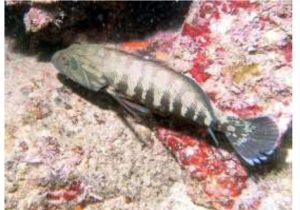 Panama Graysby
Panama Graysby
The Panama Graysby has a large, dark bluish area/blotch behind the eye. They also sport nine to ten dark bars on the body and the base of the tail. They are from the family of Sea Basses. They range in water depths from 15’ to 250’. They are bluish gray or greenish brown to brown; numerous orange spots on their head and their fins dark. They are common in the Gulf of California and tip of Baja to Panama. These fish are generally solitary and inhabit reefs and rocky, boulder-strewn slopes. They are shy and rapidly retreat to protective crevices or hole when approached. Their size ranges from 7-10” with a maximum of 12”.
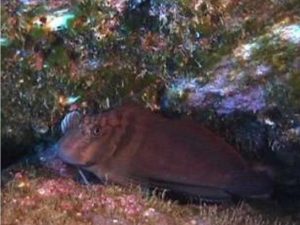 Panamic Fanged Blennie
Panamic Fanged Blennie
Panamic Fanged Blennies reach a maximum length of 7″ and are normally found in the first 50′ of the water column around rocky reefs in the surge zone. They are diurnal (active and feed during the day), feeding primarily on algae and very small invertebrates. The blenniidaes are small bottom dwelling fishes that are characterized by a combination of an elongated body and a long based dorsal fin with fewer spines than soft rays. The diet of most consists of algae. They lay demersal eggs – an egg which remains on the bottom, either free or attached to the substrate – which are guarded by the male until hatching. At present there are 29 known species of Blennidae of which 7 are found in Mexican waters. The Panamic Fanged Blenny is the sole member of the Ophioblennius Genus.
The Panamic Fanged Blennie is from the family of Combtooth Blennies. It is generally dark brown in coloration but often has yellowish bars on the head and anterior part of the body. There is also a characteristic brown spot found behind the eyes. They reach a maximum length of 7″.
Panamic Green Moray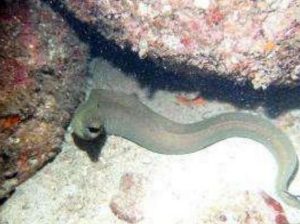
The Panamic Green Moray Eel is found in the first 100′ of the water column around rocky reefs. It is found in most Mexican waters, including around the oceanic islands, with the exception that it is not found north of Magdalena Bay on the Baja. They come from the family of Muraenidae. They have an overall brown to green-brown coloration with a few white or yellow flecks on the rear half of the body and dorsal fin. They have large and distinct anal and dorsal fins with the dorsal origin commencing at the top of the head and well in front of the gill openings. These eels can reach a maximum length of 6′. They open and close their mouth to breathe, it isn’t a threat display. They are not aggressive and will hold their position when spotted. Divers may approach but use caution and don’t threaten them.
Download the full edition or view it online
—
Terry is a founding partner and scuba instructor for Aquatic Sports and Adventures (Deportes y Aventuras Acuáticas) in Manzanillo. A PADI (Professional Association of Dive Instructors) Master Instructor in his 36th year as a PADI Professional. He also holds 15 Specialty Instructor Course ratings. Terry held a US Coast Guard 50-Ton Masters (Captain’s) License. In his past corporate life, he worked in computers from 1973 to 2005 from a computer operator to a project manager for companies including GE Capital Fleet Services and Target. From 2005 to 2008, he developed and oversaw delivery of training to Target’s Loss Prevention (Asset Protection) employees on the West Coast, USA. He led a network of 80+ instructors, evaluated training, performed needs assessments and gathered feedback on the delivery of training, conducted training in Crisis Leadership and Non-Violent Crisis Intervention to Target executives. Independently, he has taught hundreds of hours of skills-based training in American Red Cross CPR, First Aid, SCUBA and sailing and managed a staff of Project Managers at LogicBay in the production of multi-media training and web sites in a fast-paced environment of artists, instructional designers, writers and developers, creating a variety of interactive training and support products for Fortune 1000 companies.
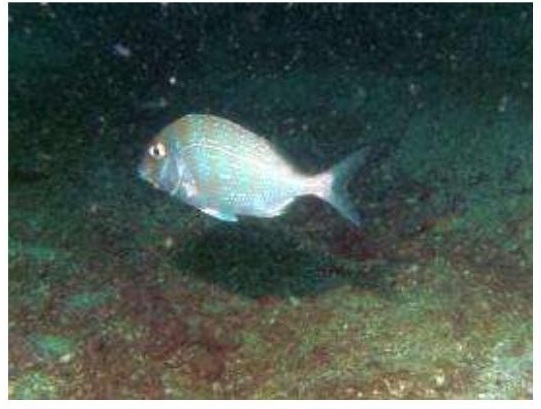

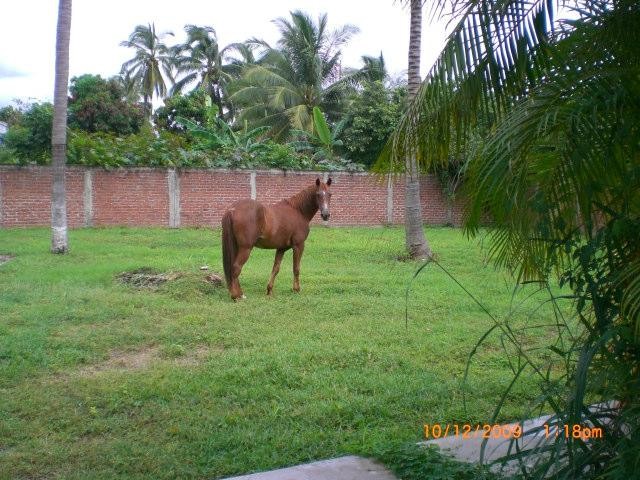

You must be logged in to post a comment.